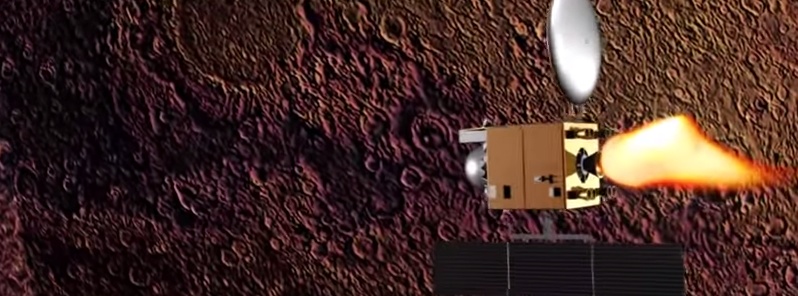India’s first Mars satellite ‘Mangalyaan’ enters orbit

India's first interplanetary mission to planet Mars, Mars Orbiter Mission, arrived in the Martian orbit on September 24, 2014 making India the first nation to enter the Mars's orbit in it’s first attempt and the first Asian nation to reach the Red planet.
India's Mars Orbiter Mission (MOM) probe was captured by the Red Planet's gravity around 02:11 UTC today making Indian Space Agency the fourth entity to enter Mars's orbit.
The spacecraft launched from the Sriharikota spaceport on the coast of the Bay of Bengal on November 5, 2013 and traveled over 650 million kilometers in it’s 10-month long space journey to enter Mars.
Six Earth Bound maneuvers were carried out on 7th, 8th, 9th, 11th,12th and 16th November, 2013. Trans Mars Injection was carried out on December 1, 2013. This historical event took place just two days after NASA's MAVEN spacecraft reached the Red Planet, which now hosts five operational orbiters as well as two working surface craft — NASA's Opportunity and Curiosity rovers.
VIDEO: India triumphs in maiden Mars mission http://t.co/aF9yXfHjvb pic.twitter.com/A5dl9kQ01V
— Reuters India (@ReutersIndia) September 24, 2014
NASA congratulated the Indian Space and Research Organization (ISRO) on Wednesday’s success via Twitter. Indian prime minister Narendra Modi highly congratulated the scientists involved in the successful mission and urged the nation to embrace the achievement.
Costing only $74 million, MOM is one of the cheapest interplanetary missions ever undertaken. This is just a little fraction of the $ 671 million that NASA spent on MAVEN (Mars Atmosphere and Volatile Evolution) which is the first spacecraft sent to explore the tenuous upper atmosphere of Mars. Indian spacecraft experts see the design as one that cuts cost without compromising with the quality.
Named as Mangalayaan (Sanskrit name for Mars Aircraft), the Mars Orbiter Mission is conceived by most people as a demonstration of the fact that India too has the capabilities to conduct an interplanetary mission. That being the case, the aircraft does also carry a camera and four instruments to be used for studying the planet’s surface and atmosphere.
As mentioned by ISRO, the scientific objective of the mission is “Exploration of Mars surface features, morphology, mineralogy and Martian atmosphere by indigenous scientific instruments.”
One key objective of the mission is to detect Methane in the atmosphere which could mean the existence of living organism as more than 90% of the methane found here on Earth are produced by living bodies.
The Mangalyaan robotic probe is expected to soon start exploring the atmosphere of Mars. The mission was technically an attempt to develop the technologies required to design, plan, manage and operate an interplanetary mission.
China and Japan have already led failed missions to Mars as India just got the upper hand for the moment. About half of the spacecraft sent on missions to Mars somehow failed to reach their target. Of the 51 missions led to the Red Planet, only 21 has become successful.
Learn more at ISRO
Featured image credit: Rupam Sammadar

Commenting rules and guidelines
We value the thoughts and opinions of our readers and welcome healthy discussions on our website. In order to maintain a respectful and positive community, we ask that all commenters follow these rules:
We reserve the right to remove any comments that violate these rules. By commenting on our website, you agree to abide by these guidelines. Thank you for helping to create a positive and welcoming environment for all.